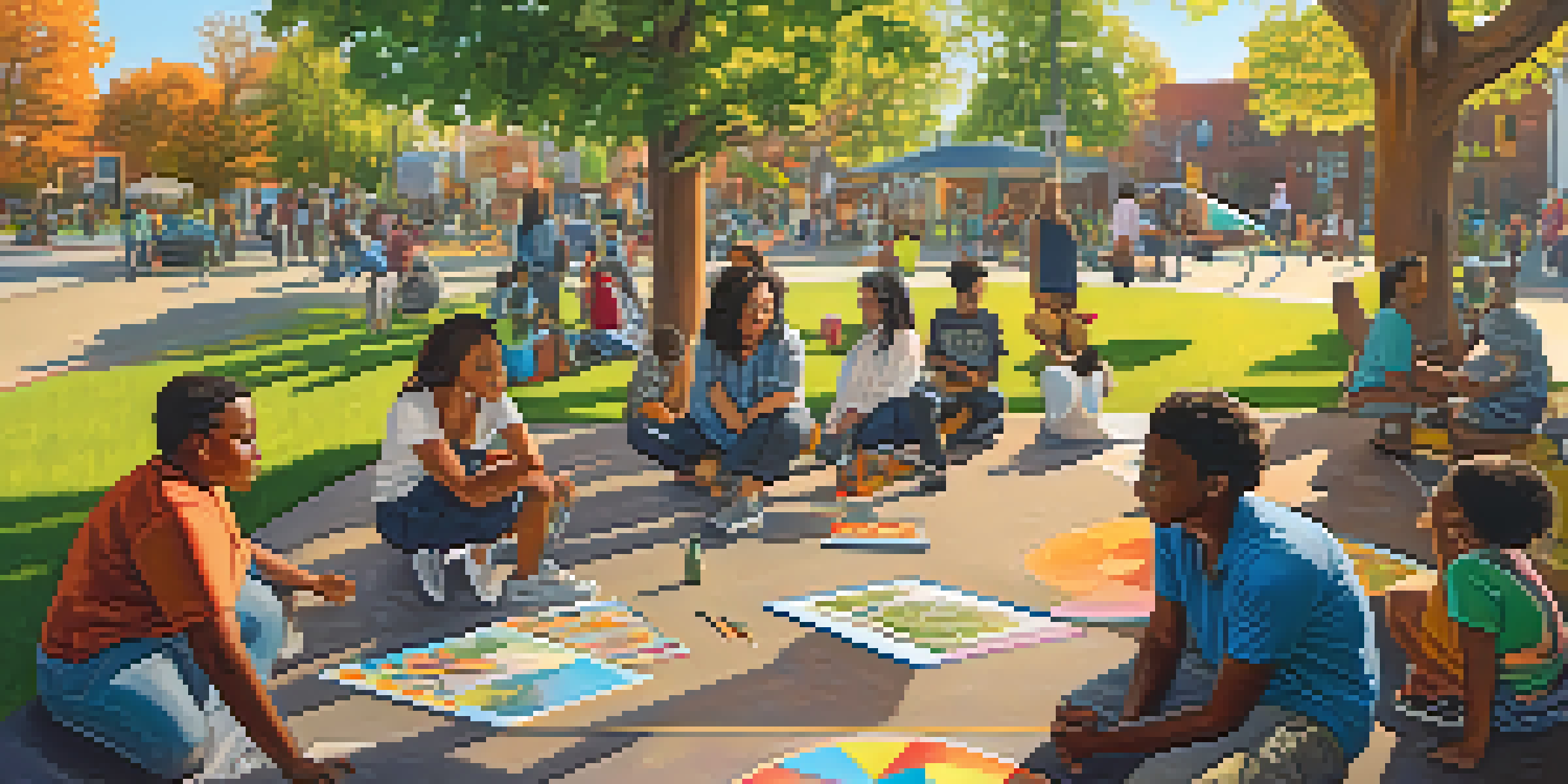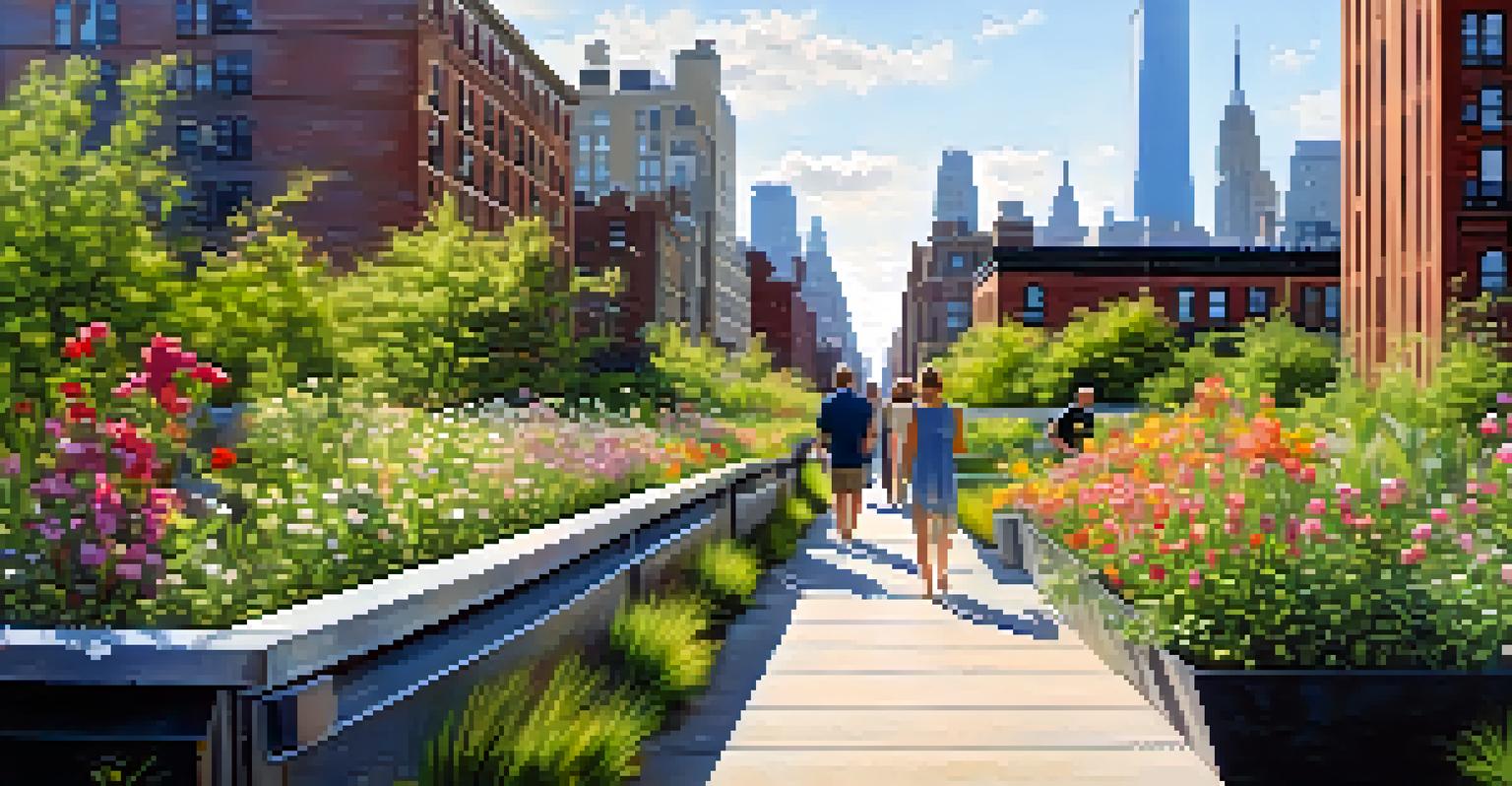Art and Place-Making: Creating Meaningful Urban Experiences

Understanding Place-Making and Its Importance
At its core, place-making is about transforming public spaces into vibrant places that foster community interaction. Think of it as creating a stage where the community can perform, engage, and connect. This concept goes beyond mere beautification; it aims to enhance the quality of life for residents and visitors alike.
Public art is a reflection of the community, a mirror that reflects the culture and identity of the people who live there.
Art plays a crucial role in this transformation, as it adds layers of meaning and identity to a space. Imagine walking through a park adorned with sculptures that reflect the local culture or murals that tell the stories of the community's history. These artistic elements not only beautify the area but also create a sense of belonging.
As cities continue to grow, the need for meaningful urban experiences becomes even more vital. By integrating art into place-making, we can cultivate spaces that resonate with the people who use them, fostering a deeper connection to the environment and each other.
Art as a Tool for Community Engagement
Art can act as a bridge that connects diverse groups within a community. When local artists are involved in place-making, they bring unique perspectives and experiences that resonate with residents. This collaboration can spark conversations, encourage participation, and build a shared sense of pride.

Take community murals, for instance; they often involve local residents in the design and painting process. This collaborative effort not only beautifies the space but also fosters a sense of ownership among the participants. As people invest their time and energy into a project, they create lasting bonds and a shared narrative.
Art Transforms Public Spaces
Integrating art into place-making enhances community interaction and creates a sense of belonging among residents and visitors.
Moreover, these artistic endeavors can serve as a catalyst for social change, addressing local issues through creative expression. By engaging community members in meaningful ways, art becomes a powerful tool for fostering dialogue and driving positive transformation.
Case Studies: Successful Art and Place-Making Projects
Examining successful case studies can provide valuable insights into effective place-making practices. For instance, the High Line in New York City transformed an abandoned railway into a lush public park filled with art installations. This project not only revitalized the neighborhood but also created a new urban identity that attracts millions of visitors each year.
Art is the most beautiful of all lies; it’s a bridge that connects us to our shared humanity.
Another inspiring example is the community-driven ‘Cleveland Public Art’ initiative, which collaborates with local artists to beautify public spaces. By focusing on local narratives, the initiative brings people together and enhances the urban experience, making neighborhoods more inviting and engaging.
These examples illustrate how art can breathe new life into underutilized spaces, fostering connections and enhancing the overall urban experience. As cities seek innovative solutions to enhance livability, these case studies highlight the transformative power of art in place-making.
The Role of Local Artists in Urban Development
Local artists are often the heartbeat of vibrant urban spaces, bringing authenticity and cultural relevance to place-making efforts. By incorporating the voices of those who know the community best, cities can create spaces that truly reflect their identity. Artists serve as storytellers, using their work to capture the essence of local culture and history.
Engaging local artists in urban development also supports the economy by creating job opportunities and fostering creative industries. When artists are given a platform, they contribute to a sense of community pride and help attract visitors, ultimately boosting local businesses.
Local Artists Drive Urban Identity
Engaging local artists in urban development helps reflect community culture and boosts local economies through creative industries.
Additionally, these collaborations can lead to innovative approaches to urban challenges. Artists often approach problems from unique angles, leading to creative solutions that enhance the functionality and aesthetic appeal of public spaces.
Challenges in Integrating Art into Urban Spaces
Despite the many benefits, integrating art into urban spaces comes with its challenges. One significant hurdle is securing funding for artistic projects, as budgets can be tight in city planning. Without sufficient financial support, many creative initiatives may struggle to get off the ground.
Moreover, there’s the issue of balancing artistic expression with community needs and preferences. While some may appreciate avant-garde installations, others might prefer traditional forms of art. This diversity of opinion can lead to conflicts about what types of art should be showcased in public spaces.
Lastly, navigating the bureaucratic processes involved in public art installations can be daunting for artists and community members alike. Streamlining these processes and fostering collaboration between artists and city officials can help overcome these barriers and encourage more vibrant place-making efforts.
The Impact of Art on Urban Identity and Branding
Art has the power to shape the identity of a city, influencing how residents and visitors perceive a place. When cities invest in public art, they communicate a commitment to culture, creativity, and community engagement. This investment can enhance a city’s brand, making it more attractive for tourism and business.
For example, cities renowned for their public art, such as Berlin or Barcelona, have become cultural destinations that draw millions of visitors. These cities leverage their artistic offerings to promote local culture and boost economic development, showcasing how art can serve as a vital component of urban branding.
Challenges in Art Integration
Securing funding and balancing artistic expression with community preferences are key challenges in successfully integrating art into urban spaces.
Ultimately, a strong urban identity rooted in art can foster pride among residents. When people feel connected to their city's unique character, they are more likely to engage in community activities and contribute to a vibrant local culture.
Future Trends in Art and Place-Making
As urban areas continue to evolve, the future of art and place-making holds exciting possibilities. Increasingly, cities are embracing technology to enhance artistic experiences, such as through interactive installations and augmented reality. This fusion of art and technology can engage a broader audience and create immersive experiences that resonate with diverse demographics.
Moreover, sustainability is becoming a key focus in place-making efforts. Artists and urban planners are exploring eco-friendly materials and practices that not only beautify spaces but also promote environmental awareness. This trend reflects a growing recognition of the interconnectedness of art, community, and the environment.

Finally, the rise of social media is transforming how art is experienced and shared. Public art can quickly gain traction online, attracting attention and encouraging more community involvement. As technology continues to shape our world, the integration of art in urban spaces will undoubtedly evolve, paving the way for innovative and meaningful urban experiences.